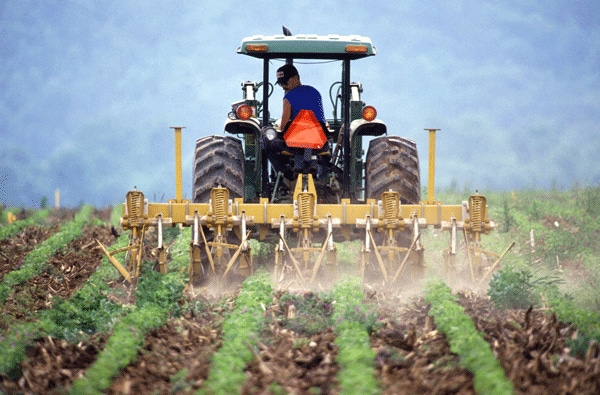
• According to the Centers for Disease Control and Prevention (CDC), agriculture ranks as one of the most hazardous industries in the country.• There is no perfect solution for preventing tractor rollovers, but there are ways to minimize the life-threatening situations that can occur if a tractor is overturned.• At this time, ca.uky.edu/rops is the only comprehensive online ROPS guide in the country.
April 21, 2011

With spring planting season now in full swing on farms across the state, Kentucky Farm Bureau (KFB) urges everyone working on or around the farm to refresh themselves with safe practices for operating tractors.
According to the Centers for Disease Control and Prevention (CDC), agriculture ranks as one of the most hazardous industries in the country. In fact, between 1992 and 2007, the CDC reports that 8,088 farm workers in the U.S. died from work-related injuries. The leading cause of death: tractor rollovers, accounting for an average of 96 deaths annually. Additionally, the Farm Safety Association (FSA) declares that about half of all fatal tractor accidents are caused by rollovers.
There is no perfect solution for preventing tractor rollovers, but there are ways to minimize the life-threatening situations that can occur if a tractor is overturned. Operators should always be physically and mentally capable of driving a tractor, seatbelts worn at all times and no additional passengers allowed (despite the convenience or “fun” of hitching a ride on a tractor). Proper training from an experienced operator is also essential, especially with younger users, to learn how a tractor is driven correctly and what factors can cause it to overturn.
Yet even when proper precautions are taken to prevent a rollover, accidents do still happen. According to the FSA, rollovers generally occur due to driving too fast for the conditions that are present, striking a surface hazard such as a rock, stump or hole, running into a ditch, hitching high for extra traction, or driving on steep slopes. In such circumstances, sometimes the only thing that can save a life is a seatbelt and Rollover Protective Structure (ROPS).
ROPS are highly engineered steel frames placed around and above the driver’s seat of a tractor or built into a cab structure in similar fashion. Used in conjunction with a seatbelt, ROPS are designed to keep the operator within a frame of safety and protect the driver by limiting a rollover to 90 degrees.
Introduced as voluntary accessory
ROPS have been in existence since the late 1960s, but were introduced as a voluntary accessory. In 1985, however, the American Society of Agricultural Engineers (ASAE) standard for farm safety equipment changed, stating that the equipment no longer “should” but “shall” be provided on all new tractors. While OSHA standards required ROPS on agricultural tractors prior to 1985, those regulations only applied to the farm operator and just on farms that were subject to OSHA or similar state standards — thus the ASAE change forced tractor manufacturers to make ROPS part of their standard equipment for the first time.
Since tractors have a much longer lifespan than automobiles, it is not uncommon to see one that was built in the 1970s or 1980s — without ROPS installed — working in a Kentucky field today. To combat that gap in safety equipment availability, the University of Kentucky’s College of Agriculture launched an online program in early 2010 to help farmers identify what is needed to retro-fit an older tractor with the protective system — and potentially save a life.
By visiting The Kentucky ROPS Guide website, ca.uky.edu/rops, farmers can easily look up the make and model of their tractor to learn what type of ROPS is needed, which suppliers offer that type of system and how to order it. While this online guide is designed to be extremely user-friendly, its contents are what make it so unique. At this time, ca.uky.edu/ropsis the only comprehensive online ROPS guide in the country. (For a full report on the website and what can be found there, visit http://southeastfarmpress.com/equipment/online-guide-simplifies-rops-retrofit).
Overall, tractor safety is a matter of applying operating knowledge with common sense and awareness of one’s surroundings. Complying with the manufacturer’s safety guidelines will prevent most accidents before they occur, but when and if a tractor was to overturn, having a properly engineered and installed Rollover Protective Structure and wearing a seatbelt could be the only difference between life and death. Kentucky Farm Bureau urges farmers across the state to exercise caution whenever operating a tractor or other heavy equipment, and highly advises every tractor without a ROPS already in place be fitted with one as soon as possible.
You May Also Like



